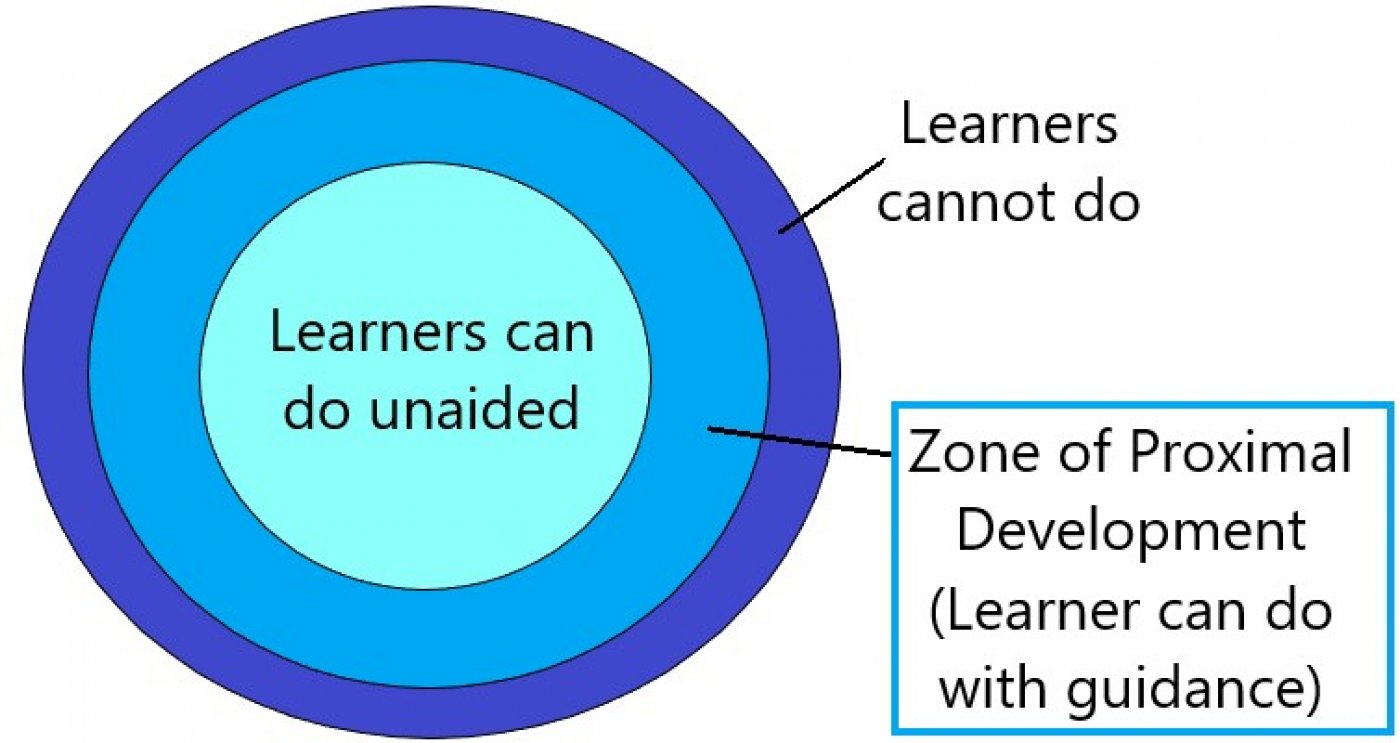Scaffolding and the Zone of Proximal Development
By the end of this lesson, you will be able to
- understand how the zone of proximal development relates to language teaching
- identify possible types of scaffolding in specific language lessons
- give a personal example of scaffolding within your teaching practice
What is the Zone of Proximal Development?
The Zone of Proximal Development (ZPD) is a construct which represents what learners can accomplish. Within the construct, we see that there are tasks which learners can complete independently, tasks which learners are not able to do by themselves, and between them, tasks which learners can complete with support. It is within this in-between space where we as instructors play the biggest role in moving learners forward.
The idea of the ZPD comes from the Constructivist Theory of Learning. Within this theory, learning and learners have the following characteristics:
- Learners use their experiences to build knowledge
- Learning is student-centred
- Any learning activity must be based in the social world
- Learners must take responsibility in learning
Activity: Watch the following video summarizing the ZPD and complete the comprehension questions below.
Why use the ZPD and Scaffolding?
The implications of the Constructivist Theory of Learning are that learners make meaning from their class experiences and that instructors must provide support and opportunities for knowledge and skills to grow.
The use of Scaffolding will facilitate learning in the classroom and give learners confidence as they complete activities. Think of scaffolding as a temporary support for learners as they master a concept or skill.
Activity: Match the learning outcome with its respective scaffold. That is, for each language task, find a scaffold that would support learners.
How does the ZPD relate to language learning?
Learning a language requires knowledge of the language and a variety of skills where learners work within the language. There are receptive (listening, reading) and productive skills (speaking, writing). As a language instructor, your goal is not only to provide learners with knowledge of the language but also improve learners' ability to use the language. Therefore, scaffolding can play a major role in the learning activities and resources made available to your students.
Think about a lesson you've had in the past where you've provided scaffolding. Was it helpful to your students? How did they use it and what did they learn?
Activity: Scaffolding and Your Teaching
Now it's time to reflect on your own teaching practice and how you can integrate scaffolding on a regular basis as part of the learning activities you create.
Now that you've reviewed the Zone of Proximal Development and Scaffolding, you're ready to move on to Use of Strategies in Language Instruction!
References
Ertmer, P. & Newby, T. (2013). Behaviourism, Cognitivism, Constructivism: Comparing Critical Features From an Instructional Design Perspective download. Performance Improvement Quarterly.
Rodriguez, M. [Mary Rodriguez]. (2014, March 5). Zone of Proximal Development [Video]. Youtube. https://www.youtube.com/watch?v=Du6vqSOj7UU
